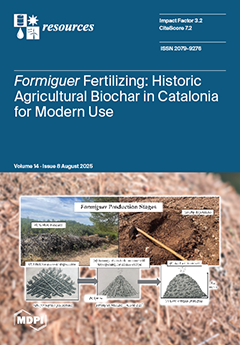Open AccessArticle
Sustainability Assessment of Lake Sediment-Based Soil Blocks for Agricultural Seedling Media
by
Miranti Dian Pertiwi, Chanifah Chanifah, Anggi Sahru Romdon, Sri Minarsih, Ari Kabul Paminto, Komalawati Komalawati, Febrian Isharyadi, Hismiaty Bahua, Forita Dyah Arianti, Joko Triastono, Wahyu Wibawa, Ira Nurhayati Djarot, Siswa Setyahadi, Bambang Nuryanto, Abdul Azies Wasil, Siwi Gayatri, Rully Rahadian, Valeriana Darwis, Mat Syukur and Raden Heru Praptana
Cited by 1 | Viewed by 1397
Abstract
The high sedimentation rate of Rawapening Lake is both an environmental challenge and a potential resource. Seedlings currently rely on single-use plastic polybags, which contribute significantly to plastic waste. The use of mineral soil as a growing medium can accelerate natural resource depletion.
[...] Read more.
The high sedimentation rate of Rawapening Lake is both an environmental challenge and a potential resource. Seedlings currently rely on single-use plastic polybags, which contribute significantly to plastic waste. The use of mineral soil as a growing medium can accelerate natural resource depletion. This study aims to evaluate the feasibility and sustainability of utilizing lake sediment as an alternative seedling media through soil block technology. An integrated Life Cycle Assessment was conducted to quantify the environmental impacts, and Multidimensional Scaling was applied to assess sustainability across environmental, technological, economic, social, and institutional dimensions. Field data from ten seedling producers using soil blocks and ten using polybags were analyzed. The results showed that soil block media reduced Global Warming Potential by 48% compared to polybags, increased phosphorus and organic matter content, and was more financially efficient, with an increase in productivity of 90.24% and a revenue cost ratio of 24.56%. Sustainability analysis classified the innovation as moderately sustainable, with the highest scores in the environmental and technological dimensions. Institutional support was identified as a limiting factor. These findings suggest that sediment-based soil block media are a viable, lower-impact alternative for seedling production, although scaling up will require policy and institutional support.
Full article
►▼
Show Figures





